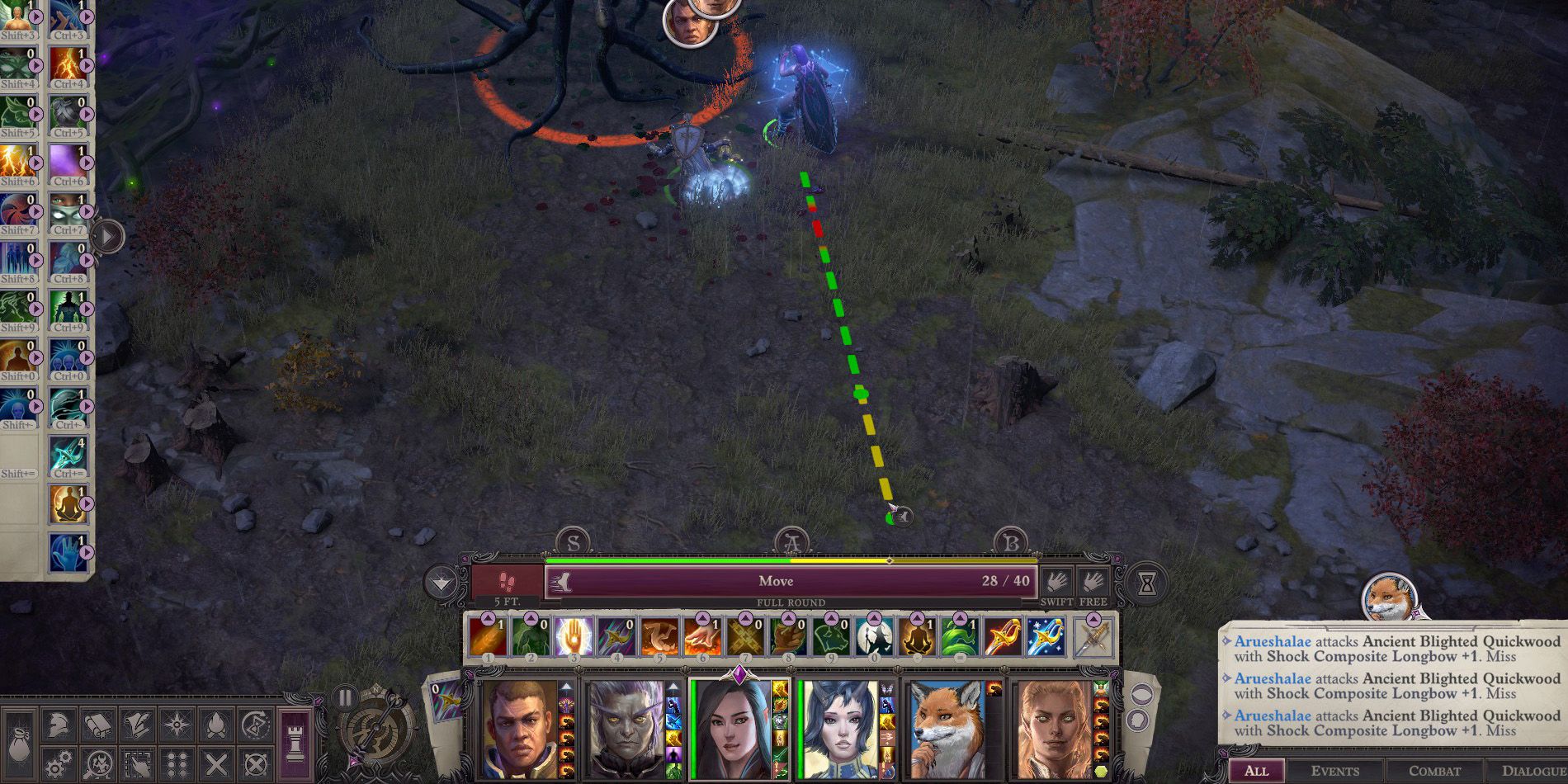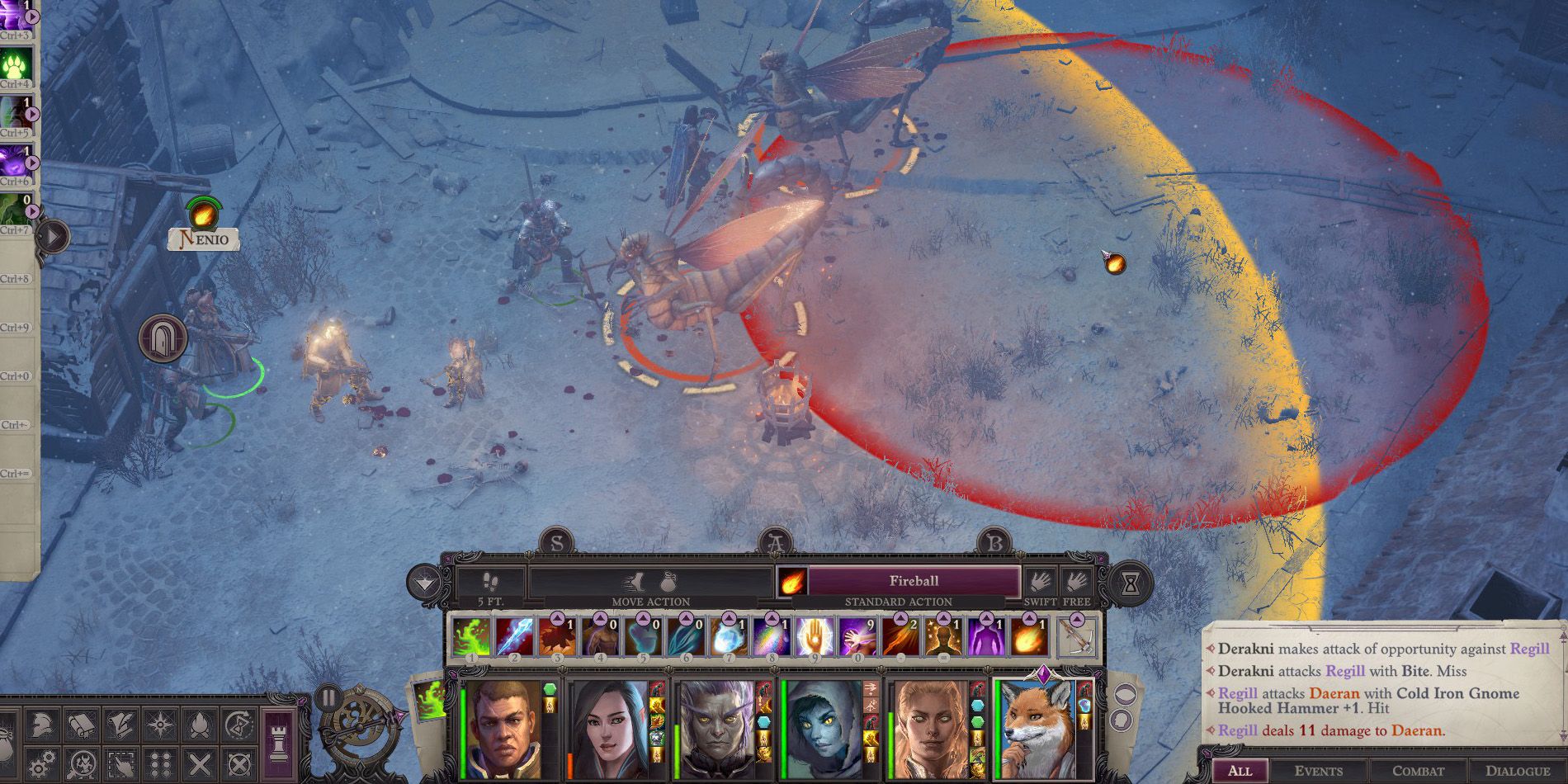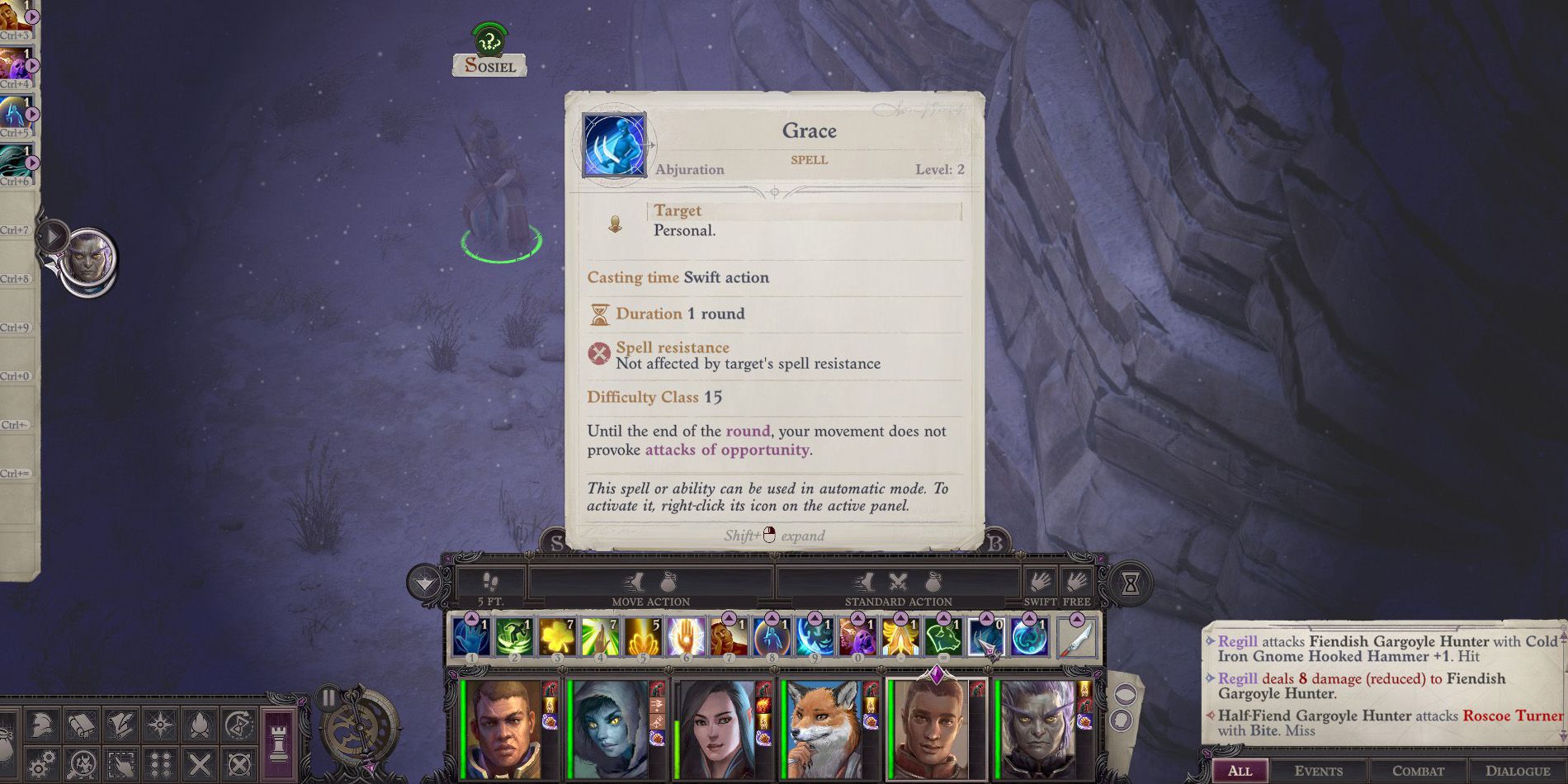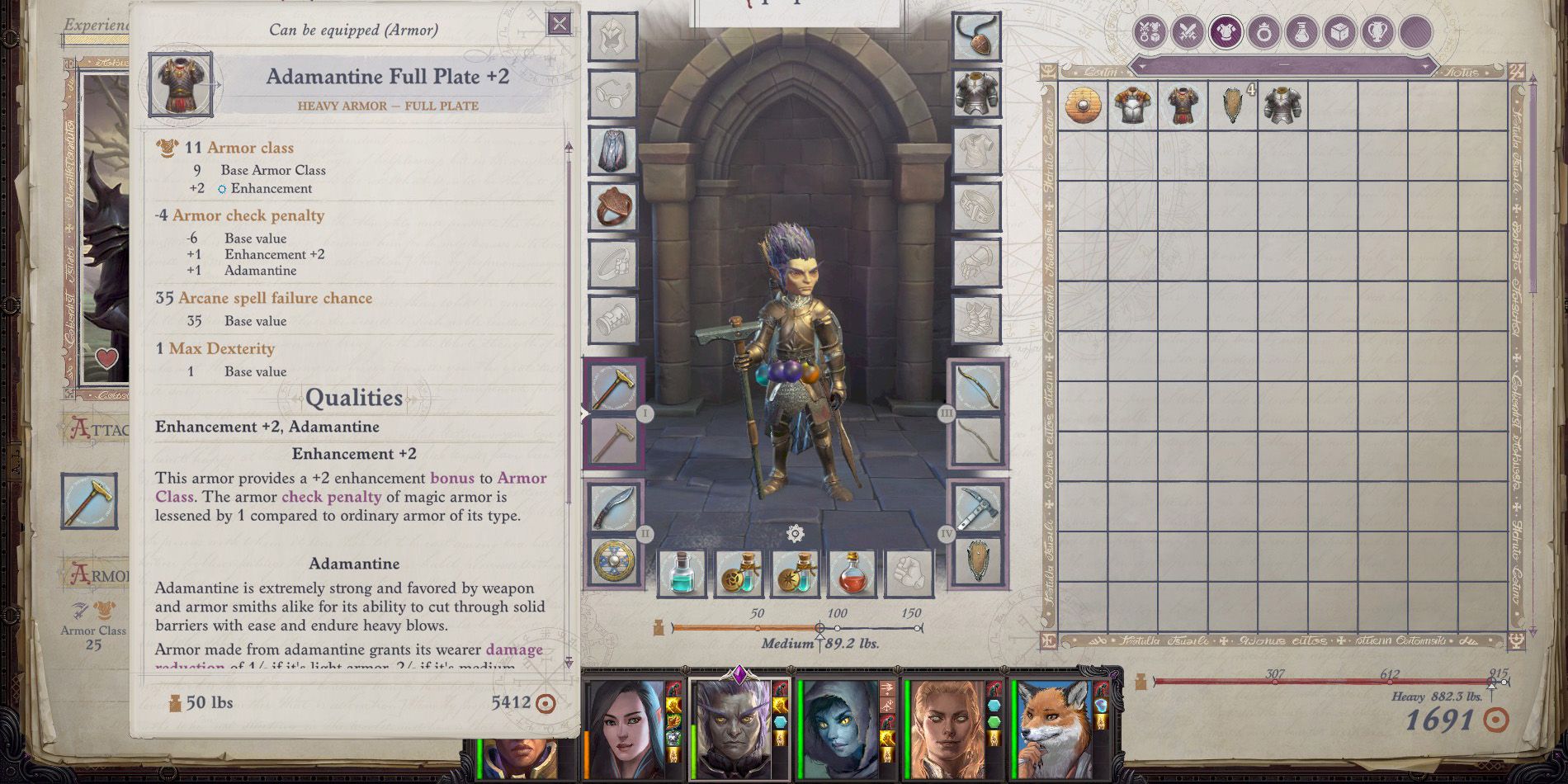In Pathfinder: Wrath of the Righteous, Attacks of Opportunity (AoOs) can be difficult to avoid but beneficial when used against foes. Based on the tabletop game, Pathfinder: Wrath of the Righteous' combat can be very complex. Owlcat has taken some liberties from Paizo and added changes to Pathfinder: Wrath of the Righteous that allows players to prevent or lessen the effect of Attacks of Opportunity.
Pathfinder: Wrath of the Righteous has two combat modes: Turn-Based and Real-Time. Playing with the former will make it much easier to understand why Attacks of Opportunity are happening: there are more visual indicators, warnings, and time to assess the battle. Once players understand the Pathfinder combat rules, they can fully switch to Real-Time.
The main thing to understand to counter Attacks of Opportunity in Pathfinder: Wrath of the Righteous is why they trigger in the first place. There are many triggers that can lead to AoOs, and some classes, like Rogues and Clerics, even have special rules for why they caused or prevented one.
Attack of Opportunity Triggers in Pathfinder: Wrath of the Righteous
Creatures in Pathfinder: Wrath of the Righteous threaten the area within the reach of their melee weapons. For most humanoids, this is five feet but can increase to 10, 15, or 20 for longer weapons or larger enemies. They may also threaten with both manufactured and natural weapons; a demon wielding a spear that also has a bite attack could threaten at both five and 10 feet.
By default, characters can only make a single Attack of Opportunity per round (six seconds in Real-Time mode). However, feats like Combat Reflexes can increase the number of allowed Attacks of Opportunity by a character's dexterity bonus: an enemy with a +2 dexterity bonus and Combat Reflexes could make three AoOs per round.
Provoke Triggers
- Movement: When a character actively leaves (but not enters) a threat range, an AoO will trigger, highlighted as a red dotted line. This also includes standing up from a prone position. One exception is taking a five-foot step, which is a separate toggle during Turn-Based mode.
- Unarmed Strike: Characters who attempt to attack with just their hands will always provoke AoOs. The feat Improved Unarmed Strike will negate this, and it is free for Monks and Cleric/Inquisitors of Iori. Note that natural weapons are a separate category from Unarmed Strike and don’t cause AoOs.
- Concentration Check: Unlike the tabletop rules, in Pathfinder: Wrath of Righteous, spells are automatically cast on the defensive. While threatened, the caster will need to make a concentration check with a Difficulty Class (DC) of 15 + (spell level x 2). The caster will roll 1D20 + caster class level + class casting stat (INT, WIS, or CHA) against the DC. Failing this check will cause an AoO and potentially the loss of the spell. Maintaining the spell will require a second concentration check of DC 10 + spell level + damage received.
- Ranged Attack: Taking a ranged attack while threatened will cause AoOs. Some spells are also ranged attacks that might cause two or more AoOs. Normally, players should make a 5 foot step out of danger before attacking. Level 4 Fighters can also learn the feat Point Blank Master to no longer trigger ranged AoOs with specific weapon types.
- Coup de Grace: Coup de Grace is an optional attack that scores critical hits on helpless targets. However, it always triggers AoOs from other nearby enemies. It is best to incapacitate or lure away foes before resorting to this powerful attack.
- Greater Combat Maneuver: Combat Maneuvers like Bull Rush, Trip, and Dirty Trick do not trigger AoOs in Wrath of the Righteous. However, several feats and special abilities will allow attackers to force AoOs with these moves. For example, Greater Bull Rush will cause the victim to take AoOs as though they willfully moved.
- Snap Shot: While AoOs can normally only trigger from melee weapons, the feat Snap Shot allows archers to make opportunity attacks within five feet. These snap attacks also can’t be countered with player AoOs, as they are not normal ranged attacks. It is best to examine snipers before approaching their melee range.
- Opportunist: Rogues and Slayers have access to the Opportunist talent. This triggers AoOs when a teammate harms a threatened target with a melee attack. However, it is limited to once per round, even with Combat Reflexes equipped.
Stopping Attacks of Opportunity in Pathfinder: Wrath of the Righteous
There are times where risking an AoO doesn’t outweigh delaying an action altogether. Several methods can help prevent AoOs or mitigate the harm of one that was legally provoked.
- Acrobatics: By choosing to move slowly at half speed, characters can attempt to bypass AoOs. The character will attempt a Mobility check against each enemy’s Combat Maneuver Defense (CMD). If it succeeds, the standard AoO chance will be canceled.
- Confounding Blades: Rogues and Slayers can choose the Confounding Blades talent. When they score a sneak attack, that foe will not be able to make AoOs for a single round, allowing the rest of the team to move and cast freely.
- Swift Cast: All spells with a casting time of “swift” are fast enough to not require a concentration check. The metamagic feat Quicken Spell can turn any standard speed spell into a swift cast, but as a +4 spell slot. This means it can only ever work on Level 5 spells or below, as the spell cap is Level 9. Also, characters can only make a single swift action per turn.
- Grace Spell: The Cleric/Oracle spell Grace will prevent all movement-based AoOs for one round. Since it is a swift cast, using the spell does not require concentration. However, the caster can only use this spell on themselves and not allies in danger.
- Reduce Creature: Enemies can only make AoOs as far as they can reach. Spells like Reduce Person and Reduce Monster may shrink their threat radius by five or more feet.
- Fighting Defensively: Toggling the Fighting Defensively ability grants an extra +2 dodge to armor class at a -4 attack penalty. If the character has three or more ranks in Mobility, the dodge bonus becomes +3. While the increase is small, it still may be enough to stop an AoO.
- Concealment and Blindness: All attacks are made against armor class, but if the character is also hard to see, a miss chance check is added. This can be done with helpful spells like Invisibility, Blink, or Blur that add concealment at different percentages. Alternatively, enemies hit with debuffs like Blindness will have a miss chance on all attacks.
- Damage Reduction and Resistance: Even if a character is hit by an AoO, it won’t mean much if it deals no damage. Damage Reduction will lower the damage from physical attacks; it is naturally gained by Barbarians and Bloodragers, while others can wear armor made of adamantine for a similar effect. Resistance lowers a particular energy (fire, cold, etc) and is either gained through spells or certain Sorcerer bloodlines or racial abilities.
By using a mix of prevention, baiting, and damage mitigation, Attacks of Opportunity will become less frequent and deadly in Pathfinder: Wrath of the Righteous. These rules work both ways, and knowing how to avoid AoOs will make it easier to leverage them against the enemy. Still, even with mastery of the system, avoiding or using AoOs may come down to luck rather than strategy.
Pathfinder: Wrath of the Righteous is available on PC.





